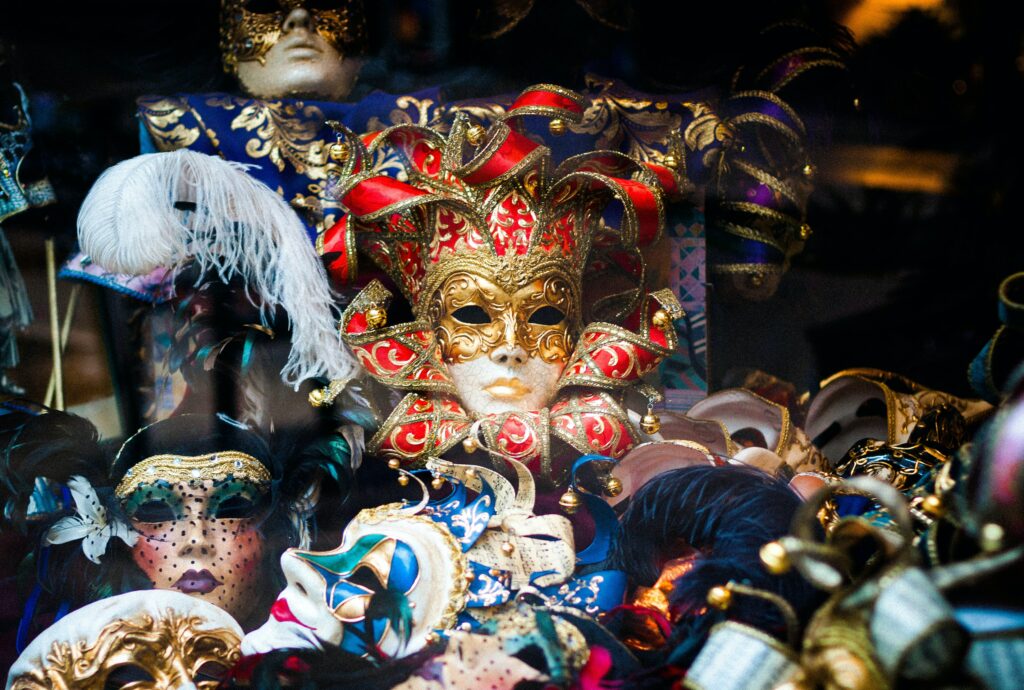Unleashing the Magic of Venice Carnival Costumes: A Guide to the Most Exquisite Designs
Are you planning to attend the iconic Venice Carnival and looking for the perfect costume to showcase your creativity? Look no further! Venice Carnival costumes are renowned for their mesmerizing designs and unparalleled craftsmanship, and they offer a unique blend of history, culture, and fashion.
Table of Contents
Venice Carnival is a centuries-old tradition that dates back to the 12th century. It is a celebration of life, love, and creativity, and it attracts thousands of visitors from all over the world each year. One of the most remarkable aspects of the Venice Carnival is its elaborate and ornate costumes, which are as much a part of the festival as the festivities themselves.
The Origins of Venice Carnival Costumes
The first documented instance of Venetians wearing masks and costumes during the carnival dates back to the 13th century. During the carnival, people from all social classes would come together to celebrate and participate in various events and games.
The masks and costumes allowed people to conceal their identities and social status, thus enabling them to mingle and have fun without any restrictions. Over time, the masks and costumes became more elaborate and ornate, and they became a symbol of the carnival and Venetian culture.
The Symbolic Meaning Behind Costumes and Masks
The use of costumes and masks during the Venice Carnival goes beyond mere decoration or entertainment. They have a symbolic meaning that dates back to the carnival’s origins.
The masks and costumes allowed people to conceal their identities and social status, which was crucial in a society where social class was highly stratified. During the carnival, people from all social classes would come together and celebrate. It allowed them to forget their differences and social hierarchies.
The masks also provided a sense of anonymity, which allowed people to behave in ways that they wouldn’t normally do. They could express themselves freely, and the masks and costumes allowed them to explore different personas and identities.
The costumes and masks also have a deeper symbolic meaning, which reflects the themes of the carnival. The carnival celebrates life, love, and creativity, and the masks and costumes are a way to express these themes. They represent the transformation of everyday life into a realm of fantasy and imagination, where people can let go of their inhibitions and embrace their desires and dreams.
The Most Exquisite Designs of Venice Carnival Costumes
Venice Carnival costumes are a unique blend of history, culture, and fashion, and they offer an opportunity to showcase your creativity and imagination. Here are some of the most exquisite designs of Venice Carnival costumes:
- The Bauta: The Bauta is one of the most iconic and recognizable Venice Carnival costumes. It was a popular choice for both men and women and was designed to be a gender-neutral costume. It consists of a white mask, a black cape, and a tricorn hat. The Bauta was worn by both men and women and allowed them to remain anonymous while expressing their creativity.
- The Moretta: The Moretta is a black velvet mask that is worn with a black dress and a veil. It was popular among women and was designed to cover the entire face, except for the eyes and the mouth. It was held in place by a button that the wearer had to hold in their mouth, which made it impossible for them to speak.
- The Colombina: The Colombina is a half-mask that covers the eyes and the upper part of the face. It was named after the female character Columbine, from the Italian Commedia dell’arte. It was popular among women and was often paired with a feathered headdress and a colorful dress. The Colombina mask represented the freedom to express oneself without any restrictions and was a symbol of beauty and grace.
- The Harlequin: The Harlequin is a colorful and playful costume that is characterized by its diamond-shaped pattern. It consists of a tight-fitting jumpsuit, a mask, and a cap with bells. The Harlequin was a popular character in the Italian Commedia dell’arte, and his costume became an essential part of the Venice Carnival. The costume comprises a tight-fitting jumpsuit, a mask, and a cap with bells. The Harlequin costume was a symbol of mischief and playfulness and represented the carnival’s theme of letting go of inhibitions and embracing one’s desires and dreams.
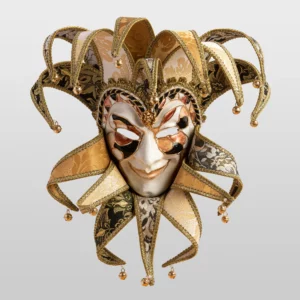
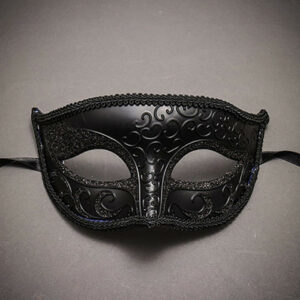
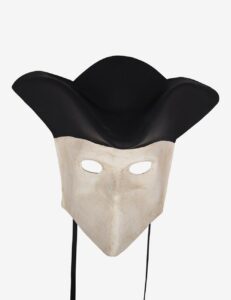
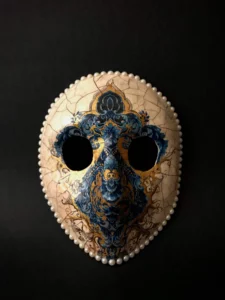
The Evolution of Venice Carnival Costumes Over Time
Venice Carnival costumes have significantly evolved over the centuries. The earliest costumes were relatively simple, focusing more on the mask’s ability to obscure identity than on aesthetic appeal. However, as the event’s popularity grew and attracted a more diverse crowd, the costumes became more elaborate. From the simple Bauta costumes worn during the early centuries of the festival, we see a shift towards more intricate costumes, heavily influenced by the characters of Commedia dell’arte and the flamboyant styles of the Baroque and Rococo periods. This evolution reflected Venice’s growing prosperity and the changing fashion trends throughout history.
Artistic Techniques in Costume Making
Venetian artisans are known for their exceptional skill in crafting Carnival costumes. The technique involves numerous arts, including sewing, embroidery, mask making, and jewelry crafting. Traditional methods often involve using papier-mâché for mask making, providing a lightweight base that can be easily molded and painted. Some artisans also incorporate other materials like leather, feathers, or even gold leaf.
The costumes, meanwhile, are designed with a keen eye for historical accuracy, and materials such as brocade, velvet, and silk are commonly used. The fine embroidery work that adorns these costumes can take weeks to complete, displaying a high level of craftsmanship and attention to detail.
Notable Costume Designers and Artisans in Venice
Venice has been home to numerous renowned costume designers and artisans throughout history. Their craftsmanship has significantly contributed to the reputation of Venice Carnival costumes worldwide. Stefano Nicolao, for instance, is an internationally acclaimed costume designer whose works have been featured in famous operas and Hollywood films. His atelier in Venice is a popular stop for visitors during the Carnival season. Meanwhile, artisans such as Sergio Boldrin and Guerrino Lovato are well-known for their exceptional skill in mask making, keeping the centuries-old traditions alive while adding their own creative twist.
Children’s Costumes in Venice Carnival
Children’s participation in the Venice Carnival is a cherished tradition. Their costumes often mirror the designs of adult costumes but with a more playful twist. Traditional characters like Harlequin, Columbine, and Pulcinella are popular choices for children’s costumes. The emphasis is on colorful, comfortable attire that allows them to participate in various carnival games and processions. It’s a magical experience for children to be part of this historical festival, wearing costumes that transport them into a realm of fantasy and festivity.
Rules and Etiquettes of Wearing Carnival Costumes
While the Venice Carnival is a time for celebration and self-expression, there are still some rules and etiquettes when it comes to wearing costumes. Respect for the historical context of the costumes is paramount. For instance, the Bauta costume should include the traditional tricorn hat and black cape, and the mask should cover the entire face.
Additionally, while the Carnival is a time of revelry, participants should behave appropriately and respectfully, keeping in mind that they are part of a centuries-old tradition.
Finally, remember that wearing a costume should not be a means to harm or offend others but a way to celebrate Venice’s rich history and culture.

